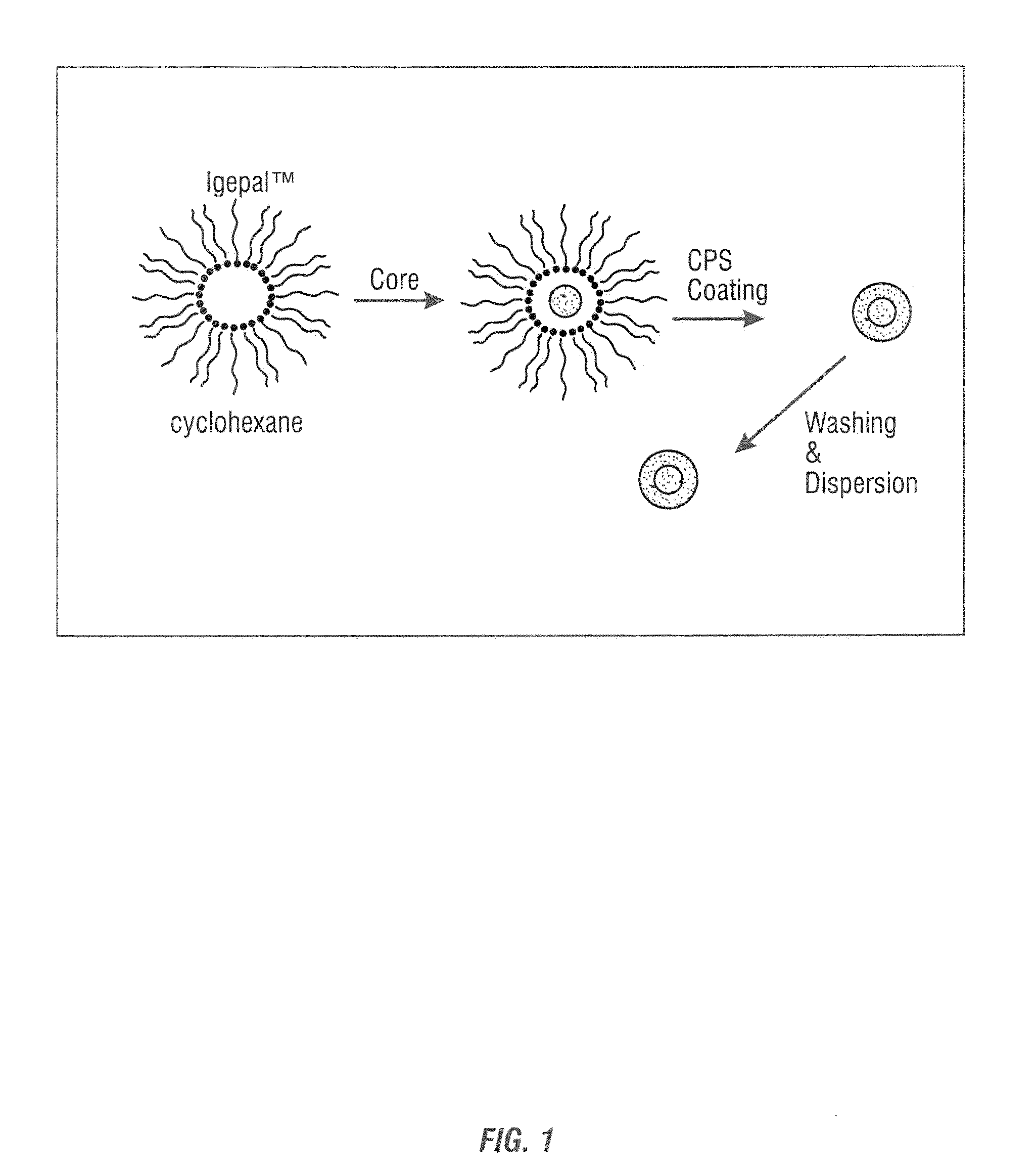Method and system for systemic delivery of growth arresting, lipid-derived bioactive compounds
a bioactive compound and systemic delivery technology, applied in the field of nanotechnology, can solve the problems of affecting the systemic delivery of ceramide, the inability to deliver the impedement of the intercalation of bioactive sphingolipids and phospholipid metabolites, and the inability to achieve the delivery of bioactive lipids into living cells,
- Summary
- Abstract
- Description
- Claims
- Application Information
AI Technical Summary
Benefits of technology
Problems solved by technology
Method used
Image
Examples
example 1
C6-Ceramide-Induced Apoptosis of Breast Cancer Cells Via Liposomal Delivery
Materials and Cell Culture
[0080]Egg phosphatidylcholine (EPC), dioleoyl phosphatidylethanolamine (DOPE), dioleoyl phosphatidylcholine (DOPC), cholesterol (CH), polyethyleneglycol (2000-5000)-distearoyl phosphatidylethanolamine (PEG-DSPE), D-erythro-hexanoyl-sphingosine (C6-ceramide), polyethyleneglycol-750-C8-ceramide (PEG-C8), dioleoyl-1,2-diacyl-3-t-rimethyl-ammonium-propane (DOTAP) were purchased from Avanti Polar Lipids (Alabaster, Ala.). Di-hydro-erythro hexanoyl-sphingosine (DHC6) was purchased from Biomol (Plymouth Meeting, Pa.). [3H]-C6 was obtained from ARC (St. Louis, Mo.), [3H]-thymidine was purchased from ICN (Costa Mesa, Calif.) and cholesterol-1,2-3H(N) hexadecyl ether ([3H]-CHE) was obtained from PerkinElmer (Boston, Mass.). Silica gel 60 thin layer chromatography plates were purchased from EMD Chemicals (Gibbstown, N.J.). Formvar / carbon-coated 400 mesh copper grids were purchased from Electron...
example 2
Dendrimers as a C6-Ceramide Drug Deliver Vehicle
Dendrimer Synthesis
[0109]Dendrimers were synthesized by conjugating poly(L-lysine) (PLL) dendron with PNIPAAM grafted with PLLA. PNIPAAM grafted with PLLA was synthesized by free radical polymerization. (FIG. 12).
Dendrimer Thermo-Responsive Properties
[0110]UV-vis spectroscopy (Perkin Elmer Lamda 25, Shelton, Conn.) was used to study the transmittances of dendrimers at 500 nm in PBS (pH=7.4) with temperature increase at 1° C. / 30 min at various concentrations (FIG. 13A). The dendrimers were thermo-responsive, showing a lower critical solution temperature (LCST) (defined as temperature at 95% of maximum transmittance) of 31, 32, 34, and 39° C. at concentrations of 1, 0.5, 0.1, and 0.05 mg ml−1, respectively. The LCST became obscure with decreasing concentration of the dendrimers. Above the LCST, the transmittance magnitudes decreased with increasing concentration due to the increase of the interactions of the polymers. The LCST of the PNI...
example 3
Synthesis of Ceramide-Containing Calcium Phospho-Silicate Shell Resorbable Nanoparticles for Systemic Delivery
[0121]Reverse micelles were prepared using the nonionic surfactant poly(oxyethylene) nonylphenyl ether (Igepal CO-520, Aldrich Chemical Co.) without further purification. Cyclohexane, deionized water and C6-ceramide was used as received for the synthesis.
[0122]Microemulsions of 20 mL total volume, consisting of 4 mL Igepal, 10 mL cyclohexane and deionized water, were prepared at ambient temperature in a 30 mL vial with rapid stirring. This produced a uniform mixture to which trace amounts of C6 was added in an aqueous phase as a micellular mixture of water and drug. The resulting micelle structure containing C6 was coated with CPS having composition Cαx(PO4)yzSiO2, where 0.1≦x≦10 0.1, 0.1≦y≦10, and 0≦z≦10. The size of the resulting nanoparticles was controlled by varying the ratio of water to surfactant (R=[water] / [surfactant].
[0123]After the reverse micelles were encapsulat...
PUM
| Property | Measurement | Unit |
|---|---|---|
| diameter | aaaaa | aaaaa |
| diameter | aaaaa | aaaaa |
| diameter | aaaaa | aaaaa |
Abstract
Description
Claims
Application Information
 Login to View More
Login to View More - R&D
- Intellectual Property
- Life Sciences
- Materials
- Tech Scout
- Unparalleled Data Quality
- Higher Quality Content
- 60% Fewer Hallucinations
Browse by: Latest US Patents, China's latest patents, Technical Efficacy Thesaurus, Application Domain, Technology Topic, Popular Technical Reports.
© 2025 PatSnap. All rights reserved.Legal|Privacy policy|Modern Slavery Act Transparency Statement|Sitemap|About US| Contact US: help@patsnap.com



